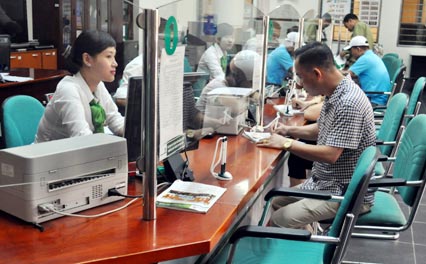Moody’s raises Vietnam credit rating

illustration photo
The revision comes after the agency raised Vietnam’s credit rating in July. Moody’s report on Vietnam’s banking system is based on a comprehensive analysis and data on the current and expected economic conditions and ratings drivers for the banking system in the coming 12 to 18 months.
According to Moody’s, the operating environment for lenders began to stabilise after beginning a long slide in 2012 as a consequence of rapid credit growth in previous years. Vietnam’s efforts to improve its financial system and emphasise economic stability over growth has resulted in credit ratings upgrades.
However, Moody’s noted that Vietnam’s significant bad debt ratio remains an issue and will make bank liquidity slow to recover. As such, profitability across the banking sector will continue to be under pressure.
Vietnam’s economy grew 5.62 per cent in the first nine months through September compared to the same period last year. The government has cut policy interest rates twice this year, aiming to boost whole year growth to 5.9 per cent for 2014, above a World Bank estimate of 5.6 per cent, and 6.2 per cent for 2015.
“Improvements in macroeconomic stability have led to strengthened systematic liquidity,” said Gene Fang, a Singapore-based Moody’s vice president in a company statement.
In early November, Fitch Ratings raised Vietnam’s credit rating by one level to BB-, three levels below investment grade and said government policies have put the country’s economy on more stable ground. Standard & Poor’s also rated Vietnam at BB-, while Moody raised its assessment in July to B1, four steps below investment grade.
What the stars mean:
★ Poor ★ ★ Promising ★★★ Good ★★★★ Very good ★★★★★ Exceptional
Latest News
More News
- The promotion of ESG via banking (November 21, 2024 | 09:32)
- Standard Chartered committed to Vietnam’s financial success (November 21, 2024 | 09:24)
- Full ESG adoption the priority for Agribank (November 21, 2024 | 09:07)
- Banks entice youth with tech advances (November 21, 2024 | 08:00)
- ESG represents a shift towards sustainability for banks (November 20, 2024 | 13:00)
- GGGI supports Vietcombank’s debut of $80 million green bonds (November 20, 2024 | 11:20)
- SHB and the ESG journey: creating social value in every step (November 19, 2024 | 15:00)
- Banking sector contributes to ESG, green growth, and sustainable development (November 19, 2024 | 14:42)
- ESG implementation in banking: from awareness to action (November 19, 2024 | 12:08)
- VIR hosts 'ESG in Banking: Leading Through Implementation' conference (November 19, 2024 | 11:14)




















 Mobile Version
Mobile Version